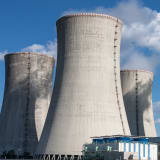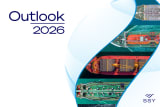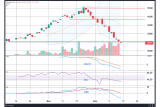
The coming year is shaping up be particularly positive for Africa’s iron ore mining sector, with the muchanticipated Simandou mine finally coming online. While industry chatter has been buzzing around this highgrade, low-cost mine in Guinea, it is merely one of several of its kind that are poised to start producing in the next few years and contribute to the continent’s iron ore rush.
The Simandou mine alone is set to deliver 60 million tonnes (Mt) of iron ore in its first full year, with production expected to double to 120 Mt the following year, according to Guinea’s Mines and Geology minister. The project is expected to contribute to 10% of China’s seaborne iron ore demand annually, according to Reuters reports. Given that China’s total iron ore imports stand at 1.2 billion tonnes (Bt) for 2024, and assuming a strong preference for Simandou’s high-quality ore, we can expect about 120–150 Mt of seaborne iron ore exports from Guinea per year entering Chinese ports.
Despite Simandou getting most of the attention, there are several smaller projects planned to come on stream on the African continent. Just 200 km away, Ivanhoe Atlantic’s Kon Kweni project is also making waves. Its first phase, expected to wrap up by 2026, will produce 2-5 Mt per annum (Mtpa), with a second-phase expansion unlocking a far more substantial 25-30 Mtpa. With 209 Mt of high-quality reserves averaging 68% Fe content, Kon Kweni is another heavyweight contender in Guinea’s growing mining scene.

Beyond these larger mines, Africa is bustling with smaller yet promising projects. Genmin’s Baniaka project in Gabon is set to kick off production later this year, churning out 5 Mtpa over a 20-year period. Meanwhile, Fortescue’s Belinga project has already started production in the second half of 2023, aiming for 2 Mtpa in its initial years. Over in Liberia, ArcelorMittal’s Western Range expansion is adding another 15 Mtpa, having commenced operations in late 2024. Jindal Africa’s project in Namibia is also expected to start shipping ore soon, using Richards Bay as its export gateway.
With global seaborne iron ore trade at 1.7 Bt in 2024, these African projects (excluding Simandou) could inject as much as 32 Mt of fresh supply by 2026. But as China’s steel industry faces a downturn, a crucial question looms: where will all this iron ore go?
History suggests that Chinese-backed projects will largely continue feeding China’s insatiable demand, but the rest of these volumes are likely to scatter. ArcelorMittal’s Liberian output could be Europe-bound, while low-cost producers may find eager buyers in the Arabian Gulf and India, both of which are ramping up steel production amid lagging domestic iron ore supply. Germany’s policy shift on its strict debt-brake could also breathe new life into its steel sector, increasing its need for imported ore.
As West Africa’s mines muscle out higher-cost producers elsewhere, particularly in Australia, the global trade map for iron ore is set for a redraw. If Chinese buyers replace Australian cargoes with African shipments, Capesize tonne-mile demand could see a notable uptick. Meanwhile, Brazil’s iron ore dominance is unlikely to be shaken, given its lower costs and long-term contracts, meaning a net positive impact for Capesize tonne-miles.
On the Panamax front, Liberia’s newfound iron orewealth could reshape Europe-bound trade flows, potentially displacing high-cost Canadian exports (except those tied to parent companies). This shift would create fresh tonne-mile demand for Panamaxes serving Europe’s growing steel appetite.
By Vriddhi Khattar, Dry Bulk Analyst, Research.
Articles
You may also be
interested in
View allGet in touch
Contact us today to find out how our expert team can support your business















